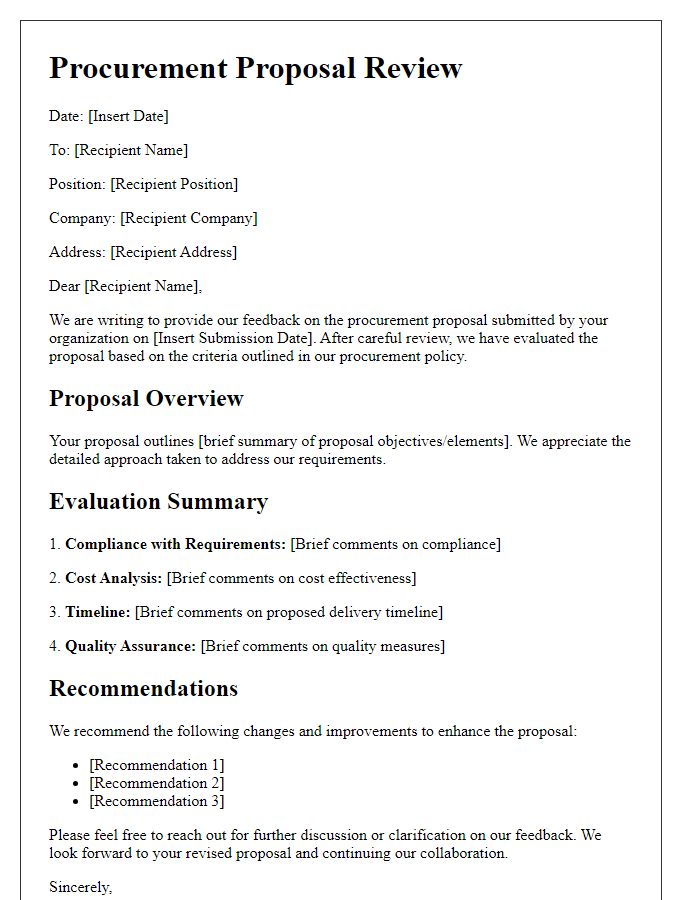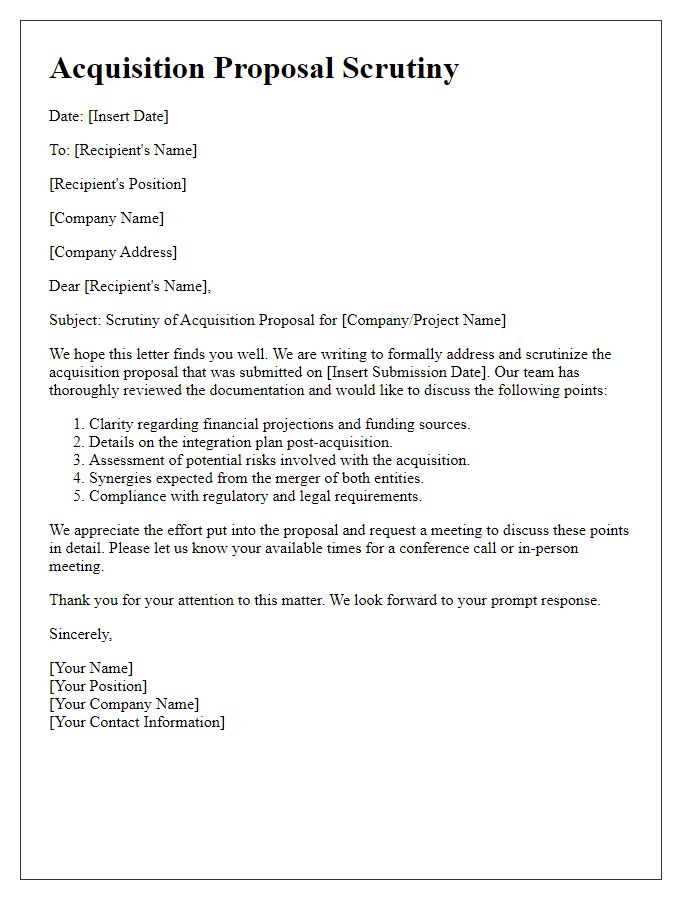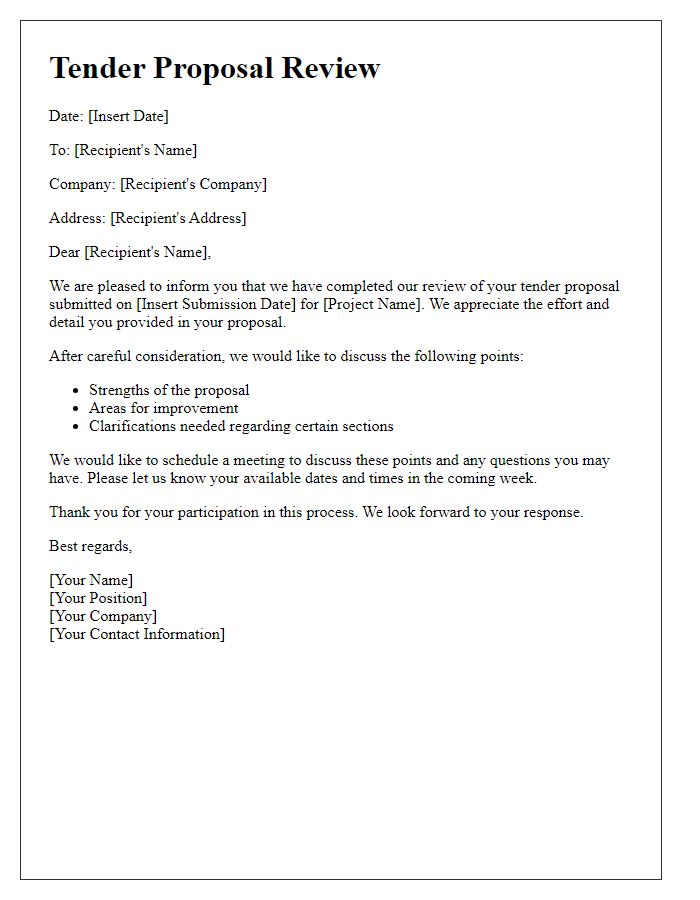Are you on the lookout for a streamlined approach to drafting your purchasing proposal assessment? Whether you're navigating the complexities of procurement or simply wanting to ensure your proposal stands out, we've got you covered. In this article, we'll explore the essential elements of an effective proposal assessment letter, sharing tips and insights that can make the process easier. So, grab a cup of coffee and dive in to discover how to elevate your purchasing proposals!

Objective and Scope
A purchasing proposal assessment evaluates potential suppliers and their offerings within specific criteria, fostering informed decision-making. Objectives include analyzing vendor capabilities, cost-effectiveness, and alignment with company standards. The scope encompasses key areas like product quality, delivery timelines, and customer service metrics, ensuring all critical factors are reviewed. Additionally, it involves assessing contractual terms and compliance with industry regulations, such as ISO standards or local procurement laws. Such assessments typically involve multiple stakeholders, including procurement teams, finance departments, and end-users, to ensure comprehensive analysis and alignment with organizational goals.
Budget and Cost Analysis
A comprehensive budget and cost analysis is crucial for evaluating purchasing proposals in organizational decision-making. This analysis typically includes a detailed breakdown of estimated costs, encompassing direct expenses such as procurement prices, shipping fees from suppliers (for example, ABC Logistics), and any additional relevant charges (import tariffs, handling costs). Indirect costs, including operational impacts and potential maintenance fees associated with acquired goods or services, must also be considered. Furthermore, the analysis should include a comparison of pricing among different vendors like XYZ Supplies and DEF Corp, highlighting price variations in their similar offerings. An assessment of potential return on investment (ROI) should be conducted, factoring in projected usage rates and longevity of products to determine long-term financial implications. Lastly, a graphical representation of cost trends over the past three years can provide valuable insights into budgeting forecasting and aid in identifying the most cost-effective proposals for successful procurement.
Supplier Evaluation Criteria
Supplier evaluation criteria encompass various metrics that organizations utilize to assess potential and existing suppliers, ensuring optimal procurement decisions. Key dimensions include financial stability, which denotes a supplier's ability to ensure operational continuity through sound fiscal management and profitability metrics, such as net profit margin, typically exceeding 10% for healthy companies. Quality assurance standards involve adherence to industry certifications, such as ISO 9001, ensuring consistent product reliability and compliance with regulatory requirements. Delivery performance assesses a supplier's track record, usually measured by on-time delivery rates, with benchmarks around 95%, paramount for maintaining supply chain efficiency. Sustainability practices reflect a supplier's commitment to environmental responsibility, often evaluated through their carbon footprint data and waste management protocols. Additionally, innovation capability measures a supplier's investment in research and development, focusing on their ability to introduce new technologies or processes, particularly in fast-paced sectors like technology and pharmaceuticals.
Compliance and Legal Considerations
Compliance and legal considerations encompass essential aspects of business operations, particularly in procurement processes involving contracts and supplier agreements. Regulatory frameworks, such as the Sarbanes-Oxley Act (SOX) and the Federal Acquisition Regulation (FAR), dictate stringent guidelines for financial transparency and ethical standards in public sector purchases. Jurisdictional laws, varying by state or country, necessitate a thorough audit of vendor practices to ensure adherence to environmental regulations, labor laws, and anti-corruption statutes. Companies must also evaluate intellectual property rights and licensing agreements to mitigate risks associated with infringement and software usage during project execution. Due diligence, including background checks and verification of certifications and licenses, further safeguards organizations against legal pitfalls and promotes robust risk management practices.
Decision Timeline and Approval Process
The purchasing proposal assessment process encompasses critical timelines and decision-making procedures essential for strategic procurement. Initial proposal submission occurs on the 1st of March 2023, leading to an evaluation period lasting four weeks, culminating in a decision by the procurement team on the 28th of March 2023. Approval stages include a preliminary review by the finance department, slated for the first week of April, followed by stakeholder presentations on the 10th of April. Final approval by the executive committee is scheduled for the 15th of April, ensuring alignment with budgetary constraints and organizational objectives. Key milestones, including document submissions and review deadlines, are meticulously tracked to facilitate a transparent assessment process.













Comments